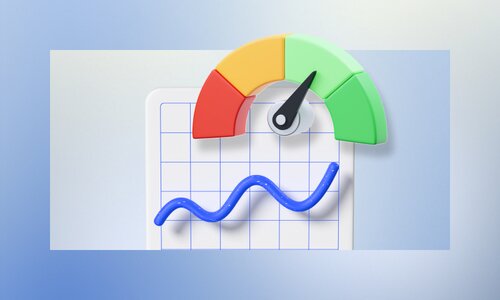You're not alone if you've found traditional budgeting methods time-consuming, frustrating, or ineffective. But what if there was a different way?
Enter zero-based budgeting. For many, this budgeting process can help you regain control of your finances.
Understanding Zero-Based Budgeting
Zero-based budgeting, or ZBB, might sound complex, but at its core, it's simple. Unlike traditional budgeting, which is often done a month or more ahead, zero-based budgeting starts from scratch each time you sit down to budget. Here's the essence of it: Every dollar that’s part of your monthly income has a job.
Imagine your income as a fleet of diligent workers, each assigned a specific task. Instead of allowing some of these workers to lounge around while others bear the burden of responsibility, zero-based budgeting ensures that every dollar actively contributes to your financial goals.
Like many, I used to struggle with traditional budgeting. It often left me feeling overwhelmed and discouraged. But when I discovered zero-based budgeting, everything changed.
For example, when I used traditional budgeting systems, I would allocate a fixed amount to my "entertainment" category, which often led to guilt when I overspent. With zero-based budgeting, I took a different approach. I gave every dollar a specific task, including allocating funds for entertainment. If I went over, I’d simply move the funds from another category. This allowed me to enjoy outings and leisure activities without the nagging feeling that I was breaking my budget. And I ended up making incremental changes in my savings account.
All in all, I found ZBB to be a proactive approach to managing my money. It allows me to make informed financial decisions that can lead to long-term wealth accumulation without constantly cost-cutting and sweating an occasional splurge.
How It Works: Zero-Based Budgeting Process
Zero-based budgeting begins with a fundamental shift in perspective. Instead of rolling over the previous year's budget and making minor adjustments, you start from scratch and eventually streamline spending so every dollar works for you. Here's how to get started:
- Income assessment: Calculate your total monthly income, which includes your salary, freelance gigs, side hustles, and any other sources of revenue. This figure forms the template for your new budget.
- List your expenses: Download your bank statements and review your bank account to create a comprehensive list of all your expenditures. Use spreadsheets to list every expense—from rent or mortgage to groceries to discretionary spending like dining out—as its own line item.
- Assign every dollar a job: The core principle of zero-based budgeting is to allocate every dollar of your income to a specific expense or financial goal. You must give each dollar a purpose, ensuring everything is aligned.
- Prioritize financial goals: Zero-based budgeting allows you to prioritize your financial goals. Whether you're building an emergency fund, saving for a vacation, retiring early, or investing with Arrived, your budget empowers you to allocate funds strategically.
- Track and adjust: Throughout the month, diligently track your spending to ensure it aligns with your budget. If you overspend in one category, change your allocations by redistributing funds from another, maintaining the zero-sum balance.
- Review regularly: This method of budgeting is all about optimization. Periodically review your budget to assess progress toward your financial and savings goals. This iterative process allows for continuous refinement to hit your strategic goals faster.
Traditional Budgets vs ZBB
Traditional budgeting often takes a top-down approach, with last year's budget serving as the foundation with minor tweaks. While this provides stability, it can sometimes overlook opportunities for cost savings and financial optimization.
On the flip side, with zero-based budgeting, the review process is a hands-on, bottom-up approach. Each budgeting cycle calls for a fresh start, demanding a thorough review of every expense and in-the-moment decision-making. This approach encourages a more in-depth examination of your financial landscape and promotes a culture of prudence and adaptability. Whether you're working toward personal financial stability or planning your next investment, zero-based budgeting can offer a personalized, effective strategy for maximizing your resources and reaching your financial goals.
Advantages and Disadvantages of Zero-Based Budgeting
Zero-based budgeting has many advantages. One of its primary strengths is its meticulous scrutiny, which allows you to identify unnecessary expenses and cost-saving opportunities. Moreover, it encourages a mindset shift toward resource optimization, promoting a culture of financial prudence and an abundance mindset.
However, it has its challenges. Zero-based budgeting can be time-consuming, especially during the initial setup, as every expense requires evaluation. It may also lack the stability of traditional budgeting methods, making it less suitable for those who prefer predictability. Finding the most cost-effective ways to save and spend takes time. Nevertheless, the time it takes to plan your budget decreases. For those willing to invest the effort, zero-based budgeting can lead to improved financial awareness and the potential for significant cost savings.
A Fresh Approach to Financial Freedom
Zero-based budgeting is more than a budget; it's a dynamic financial strategy that empowers you to streamline your finances, make informed decisions, allocate resources, and unlock money for new investment opportunities. Because zero-based budgeting equips you with a precise understanding of your finances, it allows you to better see your entire financial potential.
For example, zero-based budgeting can help you identify funds that can be redirected toward an investment property or other opportunity. It allows you to see the real potential of your finances, providing a roadmap to save for that down payment. Moreover, it's an essential tool for managing the expenses associated with property ownership, such as maintenance and repairs.
This type of budgeting can be your roadmap to financial success, but to find what truly works for you, try testing out several budgeting methods.










